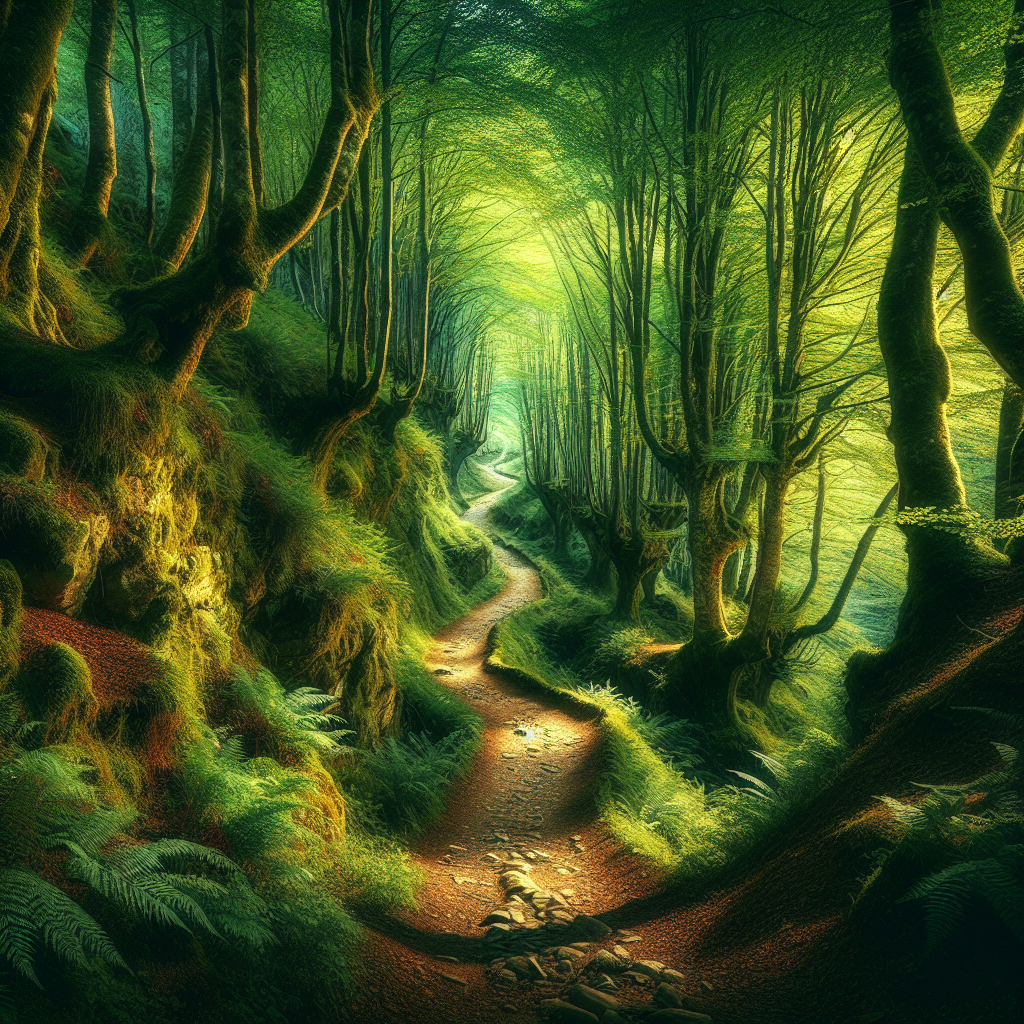Embark on a journey through time as you traverse the historical trails mentioned in “Historical Trails: Hiking Through Time”. As you lace up your hiking boots, prepare to explore not just beautiful landscapes, but also learn about significant eras of the past that have shaped the world as we know it. Your hiking experience will be enriched with both a physical adventure and a mind-broadening detour through time. Armed with stories of days gone by, you’ll tread through nature’s bounty and history’s intriguing episodes, making every step on the trails a memorable one.
Understanding Historical Trails
You might be wondering what exactly historical trails are and why we should pay any attention to them. Historical trails are ancient, previously used paths that have gradually evolved over centuries or were intentionally created. They come with a rich historical background full of stories and past events that collectively contributed to shaping today’s world. They are like a tangible timeline, offering us a glimpse into the past through the lens of different eras.
Importance of Historical Trails
Historical trails connect us with our past, allowing us to understand the evolution of mankind, civilizations, cultures, and societies in a unique and interesting way. Knowing these trails is like personal interaction with hundreds and thousands of years old history. They serve to remind us of our roots and the journey that humanity has taken over centuries. Walking on the same paths as our predecessors elicits a sense of connectivity, making legends, myths, and history come alive.
How Historical Trails Preserve History
Historical trails act as a lens through which we can observe the progression of history. They preserve and embody cultural heritage, ancient civilizations, trade routes, migratory channels, and much more. They tell a story about the communities that first developed them, their lifestyle, traditions, and the significant historical events that took place there.
Role of Historical Trails in Recreation and Education
Apart from serving as an open history book, historical trails are great centers for recreational activities like hiking, trekking, and bird watching. They provide an opportunity for outdoor education where people can learn about historical events, biodiversity, and local flora and fauna. Moreover, they boost local tourism, contributing to the local economy.
Famous Historical Trails in North America
The Oregon Trail
The Oregon Trail, almost 2,000 miles long, was a wagon route that connected the Missouri River to valleys in Oregon. Journeying on this trail, you can visualize the epic journey of thousands of pioneers who traveled westwards during the early 19th century.
The Appalachian Trail
The Appalachian Trail invites you to immerse yourself in America’s natural and cultural heritage. Navigating the rugged terrains, one can experience the Eastern United States’ scenic beauty and biodiversity.
The Pacific Crest Trail
Another treasure trove in the United States, the Pacific Crest Trail offers stunning landscapes of desert, glaciated expanses, deep forests, and volcanic peaks. It was used by Native Americans, settlers, and gold seekers in the past.
The Freedom Trail
Your journey on the Freedom Trail will offer you an insight into the American Revolution. It covers 16 historic sites in Boston, unveiling stories of America’s struggle for independence.

Significant Historical Trails in Europe
Camino De Santiago, Spain
The Camino De Santiago, also known as the Way of Saint James, is a network of pilgrims’ routes leading to the shrine of the apostle Saint James the Great in the cathedral of Santiago de Compostela in Galicia, Spain. Walking here would let you feel the spiritual essence of millions of pilgrims over centuries.
The Lycian Way, Turkey
While hiking on the Lycian Way, you get to step back in time into ancient Lycia, with its rock tombs, fortresses, and beautiful coastal scenery. This trail offers a fantastic mix of history and nature.
The King’s Trail, Sweden
The King’s Trail in Sweden, a haven for hikers, is steeped in history. Its historical roots date back to the indigenous Sami people.
The Hadrian’s Wall Path, England
On the Hadrian’s Wall Path, you can explore Roman history as you walk along the ancient fortification built by Roman emperor Hadrian. It offers a glimpse of England’s Roman past.
Historical Trails in Asia
The Nakasendo Way, Japan
Explore Japan’s history by walking on the Nakasendo Way. It was an Edo Period highway connecting Kyoto with Tokyo. You would walk through the same route as feudal lords, samurai, and merchants did centuries ago.
The Great Wall of China
The Great Wall of China, one of the most iconic sites globally, served as a military fortification against invasions. Walking here presents a breathtaking view and an impressive marvel of ancient defensive architecture.
The Shikoku Pilgrimage, Japan
The Shikoku Pilgrimage, associated with Kōbō Daishi, leads to 88 temples. Along the way, you can discover Japanese spirituality and culture.
The Gwongeumseong Fortress Path, South Korea
South Korea’s Gwongeumseong Fortress path connects various fascinating points of historical and cultural interest, offering a unique blend of natural beauty and rich heritage.

Historical Trails of Africa
The Road of Slaves, Benin
Benin’s Road of Slaves carries horrific stories of thousands of African slaves who were forced to walk this road before being boarded onto ships.
Table Mountain, South Africa
Table Mountain, offering a rich biodiversity, has trails full of local and migrant history. It allows for a captivating journey through nature while you also learn about South Africa’s history.
Gondar, Ethiopia
In Gondar, Ethiopia, the paths take you to visit medieval castles and churches, offering an unforgettable journey back through time.
The Fish River Canyon, Namibia
The Fish River Canyon in Namibia, the largest canyon in Africa, offers a challenge for hikers who wish to explore its natural beauty. It has been shaped over millions of years creating a perfect blend of natural history and geological wonder.
Remarkable Historical Trails in South America
The Inca Trail, Peru
One of the world-famous historical trails, the Inca Trail in Peru, leads to Machu Picchu, the lost city of the Incas. The trek reveals stunning Andean landscapes, ancient archaeological sites and offers profound cultural experiences.
The Qhapaq Ñan, Andean Road System
The Qhapaq Ñan, an ancient Inca road system, stretches across six countries and has been recognized as a UNESCO World Heritage Site. Walking on these trails is like taking a trip through the powerful Inca Empire.
Moai ‘Easter Island’, Chile
On Easter Island in Chile, you can follow the trails leading to the mysterious and majestic Moai statues created by the early Rapa Nui people.
Tayrona Park, Colombia
At Tayrona Park in Colombia, the trails lead you through tropical forests, picturesque beaches, and ruins of ancient civilizations, offering a fascinating glimpse into the region’s history and biodiversity.
Historical Trails in Australia and New Zealand
The Overland Track, Tasmania
The Overland Track in Tasmania is Australia’s premier alpine walk. It’s a 65 km, six-day trek through the heart of the Cradle Mountain-Lake St Clair National Park, part of the magnificent Tasmanian Wilderness World Heritage Area.
Abel Tasman Coast Track, New Zealand
The Abel Tasman Coast Track in New Zealand is a stunning journey along a chain of beaches, coves, and forests. The trail also provides insight into the region’s Maori heritage.
Bibbulmun Track, Australia
Bibbulmun Track, one of the world’s great long-distance walking trails, stitches together stories of Aboriginal heritage, colonial settlers, and Australian biodiversity.
The Tongariro Northern Circuit, New Zealand
The Tongariro Northern Circuit offers a walk through a volcanic landscape which has significant cultural and spiritual links to New Zealand’s indigenous Māori people. It provides trekkers with awe-inspiring vistas and a deep connection to the native culture.
Preservation and Conservation of Historical Trails
Importance of Conservation
Conservation of historical trails is essential to preserve the precious links to our past, and save the ecological features they contain. They promote cultural understanding and appreciation, environmental education, and recreational enjoyment.
Current Conservation Efforts
Many organizations are committed to preserving and maintaining these historical trails. They work on restoration projects, public education campaigns, community involvement programs, and policy advocacy to keep these trails alive and well.
Role of Hikers and Tourists in Conservation
Hikers and tourists play a vital role in the conservation of these trails. By respecting these trails’ natural and cultural integrity, sticking to marked paths, and adhering to the ‘leave no trace’ ethic, they can significantly contribute to their preservation.
Hiking on Historical Trails: Preparations and Precautions
Preparing Physically for a Hike
Hiking historical trails can be physically demanding. It’s important to prepare by increasing your physical fitness gradually, focusing on endurance, strength training, and balance exercises.
What to Pack for a Historical Trail Hike
When planning a hike, packing right is crucial. Carry a map, compass, sun protection, insulating clothes, a first-aid kit, food and water supplies, flashlight, and multi-purpose tools. Keep a lightweight backpack for a comfortable journey.
Safety Precautions and Rules to Follow
While hiking on historical trails, it’s essential to follow safety rules. Stick to the marked paths, check the weather forecast, know your limits, and seek local advice on trail conditions and difficulty levels.
The Future of Historical Trails
Potential Threats to Historical Trails
Climate change, urbanization, tourism-related degradation, and a lack of awareness among people are potential threats to historical trails. It’s paramount to address these issues to protect and preserve these trails for future generations.
Promising Initiatives for Trail Preservation
Various promising initiatives are underway for trail preservation. Governments, non-profits, and communities are partnering to conserve these trails. Technological advances are also being used to aid in preservation efforts.
How Technology can Enhance the Experience of Historical Trails
From GPS tracking apps to virtual reality experiences and online resources providing historical context, technology can greatly enhance the educational and recreational value of historical trails. Technology can help bring the rich history behind these trails to life and even contribute to conservation efforts.

